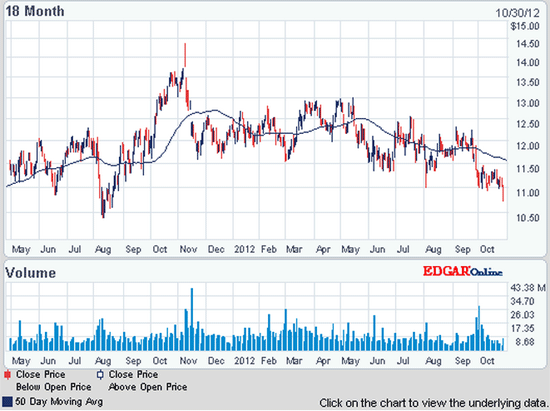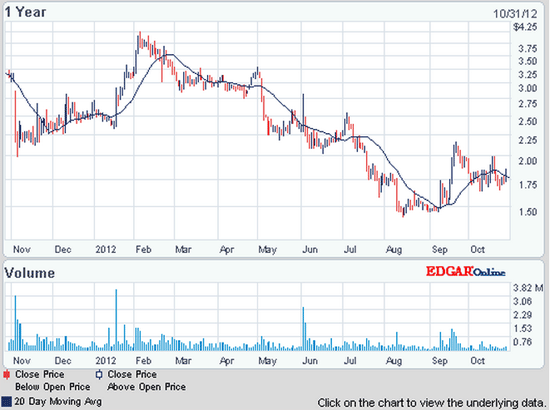Mean-reversion and Momentum Strategies Defined One theory that’s prevalent in the stocks market suggests that a stock’s price eventually returns to its mean or average price after a temporary deviation. As a result, there are strategies devised to take advantage of such price movement. That’s why mean-reversion strategies take on the “buy low, sell high” kind of thinking. On the other hand, momentum strategies are devised on the premise that strong moves in the market in either direction will be most likely followed by higher highs and lower lows. Trend following strategies try to capitalize on big market movements by buying stocks that are showing an upward trend and selling stocks that are on a downward trend. To illustrate the difference between these two strategies, take for example the chart below:  Activision Blizzard (ATVI) is every mean reversion traders dream especially during the months of November to May. It was moving in a range, between 11.50 to 13.00. Additionally, its 50 MA serves as a guide on its mean or average. That’s why traders using mean reversion strategies would typically enter a short position when the price of the stock moves .50 higher than 50 MA; and take on a long position when the price moves .50 lower than 50 MA. A mean reversion strategy like this will prove to be very profitable if the stock has been oscillating between this price ranges.  Hansen Medical (HNSN) is good for momentum strategies for the month of February to September. A good momentum strategy would exploit this opportunity the moment the stocks made lower lows. For example, a trader would go short once it broke the 3.00 price. And ostensibly, if the momentum trader got in on that short position, he would hit a major payday seeing that the stock’s price did indeed move lower. Which is the Better Strategy? Mean-reversion strategy works well in a usual market environment since stocks moves in a range typically if there’s no major news or market mover in action. However, the drawback is profits come in trickles. Thus, mean-reversion strategy has higher frequency and low profits expectation. On the other hand, for momentum traders, there’s lesser frequency since market does not move drastically in a strong trend most of the time. However, a momentum trader can potentially hit a big payday with just one trade because of the nature of the stock’s price movement. Thus, momentum strategy is low frequency and high profit potential. In his book, Trading Risk, Ken Grant pointed out that the most successful traders in the world have a 9:1 P&L ratio. Simply put, 90% of successful traders’ profits came from 10% of their trade. In the business world, this is more known as Pareto’s Principle. If we have to take this as a fact, it means that highly successful traders get the bulk of their profits from outliers – an aspect inherent on most momentum trades. Typically, successful momentum traders have that ability to do nothing unless indicators have been screaming for potential market move. They don’t get restless and enter a trade just for the sake of it. They know that sitting still and not entering a position is part of the overall strategy. Thus, once they spotted an opportunity to exploit a trend for profit, they’ll get on the position fast and milk the position for maximum profits. Of course, it takes experience and well-honed trading skills to perfectly orchestrate a winning trade. To answer the question: “which is the better strategy?”, the most complete answer would be: it depends. It depends on market movement as well as the trader’s orientation. For traders who are fixated on the “buy low, sell high” thinking, it’s way better to master a solid mean-reversion strategy; otherwise, the mindset could prove to be self-defeating. On the other hand, if the trader has enough discipline to do nothing until the perfect opportunity presents itself, momentum strategy could prove to be rewarding. Now most traders may love the allure of not getting into much trade; but believe me, not doing anything would prove to entail just as much discipline and timing than you are in a trade. comments powered by Disqus |

|
|
|
|







